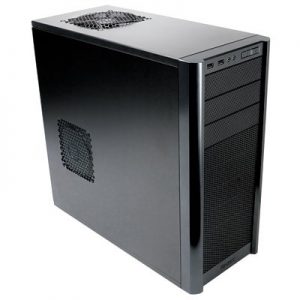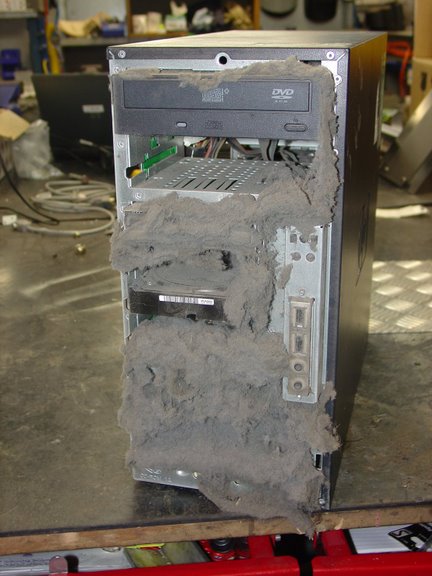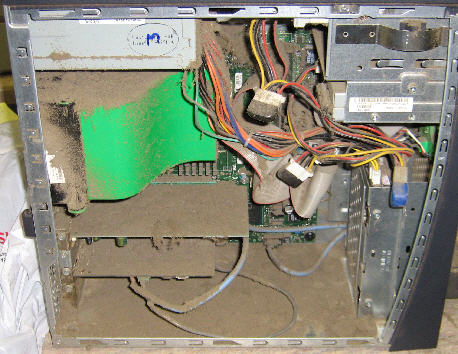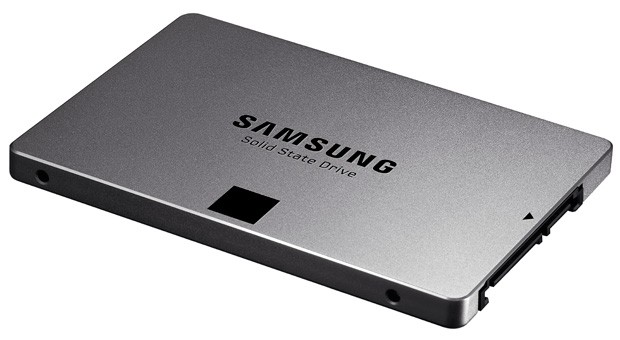 A PC is a major expense – even a cheaper one is a few hundred quid, and if you want, it’s possible to spend thousands on a machine. The good news is that these days, PCs are lasting longer than ever. Whereas in the past, your machine might have been feeling outdated within a few years, these days a good PC can last for ages before the hardware inside starts to be underpowered. That said, the longevity of your machine does of course depend on how well you look after it. A poorly cared for machine can easily end up coming to a premature end. So with that in mind, we’re going to look at how to care for your PC and ensure that it lasts for all those years of computing it should do.
A PC is a major expense – even a cheaper one is a few hundred quid, and if you want, it’s possible to spend thousands on a machine. The good news is that these days, PCs are lasting longer than ever. Whereas in the past, your machine might have been feeling outdated within a few years, these days a good PC can last for ages before the hardware inside starts to be underpowered. That said, the longevity of your machine does of course depend on how well you look after it. A poorly cared for machine can easily end up coming to a premature end. So with that in mind, we’re going to look at how to care for your PC and ensure that it lasts for all those years of computing it should do.
To begin with, we’re going to discuss issues you should consider from a longevity perspective before you buy a PC – in case you’re mulling a purchase in the near future, there are some important points to bear in mind.
Firstly, the power supply (or PSU) is a critical component of your machine – but one that is often overlooked by many. We often talk about a CPU ‘driving’ or ‘powering’ your machine, but of course, what’s really supplying the power – to every single component on board – is the PSU. Do not scrimp here and buy the cheapest bog standard power supply you can – because these bargain basement PSUs are often unreliable. They stand a much greater chance of flaking out than a quality PSU – and if a power supply does go kaput, it can also potentially fry your motherboard, and maybe even other components. Which is why if you want to have the best chance of a long lasting machine – do not skimp on the PSU. Don’t let your power supply be a disaster waiting to happen.
Stock systems from big PC vendors may not let you customise the PSU, of course – but at least look into the model on board. And if you have a choice, spend the money. Get a quality brand such as Corsair, XFX, Antec or Seasonic. Steer clear of the likes of SuperPower Watt Monster 1000 and its dodgy sounding ilk. (Note that if you already own a PC with a no-brand iffy sounding PSU, remember you can always upgrade it).
Also, if you’re building or customising your own system, ensure that the PSU will be able to cover your PC’s needs in terms of wattage – use a power supply calculator to check (here’s Coolermaster’s effort). And leave plenty of headroom; make sure you exceed the recommendations comfortably.
Speaking of Coolermaster, be mindful when it comes to picking a case, too. Don’t buy a £30 tin box with no ventilation whatsoever if you can possibly help it – heat problems are another big enemy in terms of a PC’s longevity. If your components are constantly running hot, they won’t last nearly as long.
Power is also an issue when it comes to things like power cuts or storms, which can cause voltage spikes that could damage your machine. As insurance against this, you should invest in a surge protector plug or power strip (be wary of cheapo ones that call themselves surge protected, but actually aren’t). Some folks even invest in a UPS (uninterruptible power supply) but obviously that’s a more expensive option.
Maintenance is another important point to consider when it comes to making your PC last. You’ve probably noticed that even after just a few months, a new PC will already have begun to gather a thin layer of dust on its internal components. After some time, this can build into small dust bunnies – and eventually perhaps dust hippos – that smother your boards, clog fans, and bring on the prospect of heat failure, and again a potentially premature death for components (not to mention possible lock-ups for your machine).

You need to regularly clean the insides of your PC to keep it dust free, once every few months – otherwise it might end up looking like the above machine. Use canned air (switch off and unplug your PC first, of course) to clean dust out from vents, the inside of the case, and components. Be careful with fans, though – forcing them to spin by blasting them with air can damage them, so hold the fan in place so it doesn’t move while being cleaned. It’s also worth getting a cover for your PC to keep dust from accumulating when you’re not using it.

Another consideration, heat-wise, is where your PC lives. Don’t position it so that vents are blocked against the side of a desk or other obstruction – make sure all vents are clear. Try to avoid placing it directly on a carpet (it’s likely that there are vents on the bottom of your machine, too, and being sat on a carpet won’t help on the dust front, either; or in terms of potential static electricity dangers). And don’t place your PC where it’s in the sun or, God forbid, next to a radiator or other heat source. A cool running PC will be a long running PC.
Incidentally, if you have the PC on your desk, be wary of keeping drinks near it (or on it) in case you spill them.

An SSD upgrade from a traditional hard drive is also worth mulling over. While the data on relative reliability is a little muddy depending on who you listen to, a Computerworld article from late last year observed SSD failure rates under warranty to be 1.5 per cent, with traditional spinning hard disks at 5 per cent.
Aside from physical considerations, it also helps to keep your OS clean to ensure your PC doesn’t clog up over time on the software front. Make sure you defrag your hard disk reasonably regularly (Windows 8 does this for you, if you’re on the latest version of Microsoft’s OS), and use disk cleaning utilities (Windows has these, and indeed CCleaner is a neat little program in this respect). Make sure you uninstall software you aren’t using any longer, as well. If your hard drive is running very short on space, your machine will certainly start running like a dog. For more detail on OS maintenance, see: How to perform a DIY tune up of your PC.
With just a little bit of luck – because that always plays a part in component failure, too – a well-cared for machine will easily last for five years of trouble-free running, and quite possibly much longer.

Recent Comments